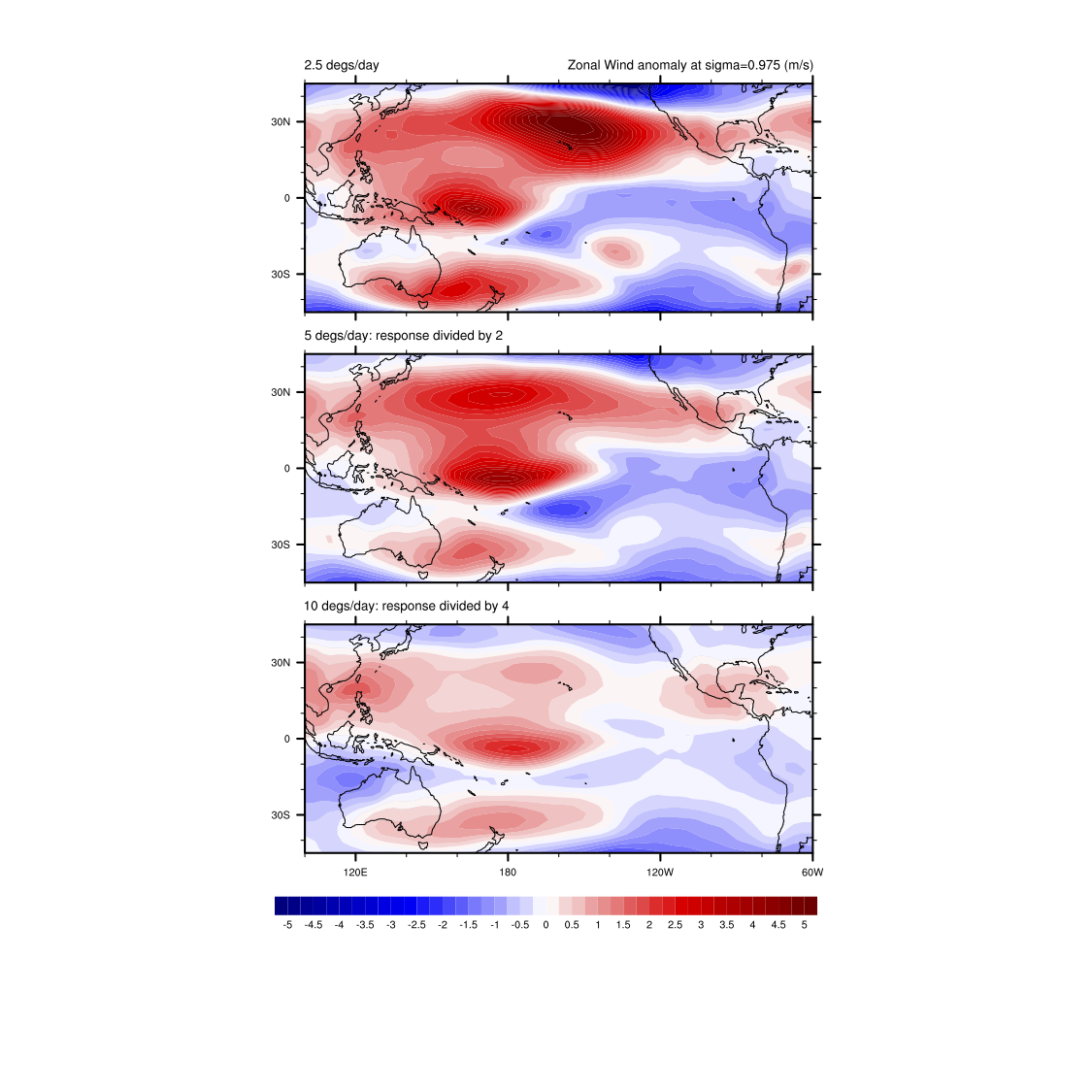Nonlinear Response to El Niño
part of the ARiSE Project (link)
El Niño Southern Oscillation (ENSO) is the leading mode of interannual climate variability. It consists of irregular, alternating phases of warm (El Niño) or cold (La Niña) Sea Surface Temperature (SST) anomalies in the central and eastern tropical Pacific Ocean. ENSO events drive large changes in atmospheric rainfall and circulation patterns within and outside the tropical Pacific through atmospheric teleconnections increasing the likelihood of extreme weather events around the globe (tropical cyclones, extreme rainfall) leading to numerous fatalities, heavy economic losses and large disruptions of oceanic and land ecosystems.
The relationship between the SST anomaly associated with an El Nino event and the resulting surface wind anomaly (which in turn will influence the SST) is nonlinear for several reasons, including the nonlinearity inherent in atmospheric dynamics. This means that the response to a deep heating will depend on the background circulation, and often exhibits a response to opposing signs in a convective heating anomaly that are not equal and opposite. Furthermore the effect of transient atmospheric systems can modify the response in a way that is not symmetrical about the sign of the convective heating anomaly.
Nonlinear equilibrium response to mid-Pacific equatorial deep convective heating

A preliminary result from the DREAM model shows this in terms of the low level wind from a long term mean with an idealised deep convective heat source in the equatorial mid-Pacific. Three cases are shown with increasing amplitudes of heating. The response has been scaled such that if it were linear, the three plots would be identical. Clearly there is a nonlinear saturation effect, currently under investigation.